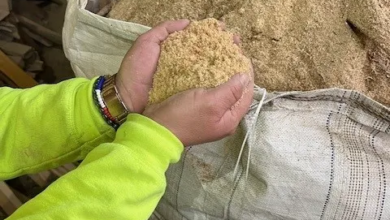Knowing Your True Costs to Maximize Profit
In the January 2020 issue of A&E, Aaron Montgomery shares some simple formulas to maximize profit.

Maximizing your profit while still being competitive all begins with knowing your true costs. Over the many years I have spent chatting with decorators at trade shows and helping small businesses, I have found that people struggle to set prices because they don’t have a good cost basis to rely on. Instead, they go with an average of the competitors or ask others to tell them what to charge.
Your business is unique; your process and the value you bring to your customers is also unique. It’s why most people pay about $2.50 retail for a plain white T-shirt, yet Kanye West can sell a similar plain white shirt for $120 (and yes, it sold out). But to be able to best determine your value to your customers, you have to start from a place of knowing your true costs.
Calculating Costs in the Decorating World
Calculating your true cost in the decorating world is sometimes harder than we think, as we can’t just take the cost of the widget and call it a day.
For example, in sublimation, determining your true costs can be a huge challenge due to a number of factors. First of all, getting supplies like ink and paper require you to rely on the supplier or manufacturer. Let’s face it, the ink manufacturer that is expensive might not be keen on exploring true costs and publishing all the facts. They are not being deceitful, as they are pointing out other factors to look at, which are relevant. But just going with a factor like $.01 per square inch and calling it good might not give you a realistic picture of your true cost.
You never want to find out the hard way that your costs are way more than you are charging. I suggest gathering all of the outside information you receive and use that as a starting point to get a true value of cost.
As decorators, we need a formula to come up with our true costs for embellishing items and then be able to apply that to the different products we make. Each company is unique as I said, but at the core, we want to know what our consumables and labor are, plus a few other areas like the waste, inventory costs, and overhead. If you have been in business for some time and have done a great job of tracking, this is no problem to figure out.
For example, take what you paid for ink and paper over a set amount of time, then take the total square inches of jobs you produced during that time (square inch of the size of product produced, times the number of times produced) and you have your paper and ink cost.
What? You did not track that? You have a business to run or you are new to this? You are in the majority, so do not fear, and honestly, you might not even need to go to the lengths above. We need to factor in everything, but as long as we shoot high, going with a rounder number will do for most of us. We are in a perceived-value industry, so unless you are trading nickels and trying to be the low-price leader, we can estimate in certain areas and still have a profitable business.
A Simple Formula
Yes, each company is different, but let me share a formula I have used with my consulting clients. These numbers are real numbers, and you might be able to do better or worse depending on your company.
I’ll use an 11-ounce coffee mug as an example, and the assumption is we are using a popular industry desktop sublimation printer. We will also err on the high side, as it is good to always make sure you can improve your bottom line, not break even. Then after the formula, I break down each section to give the things to factor and think about.
- Blank product (11-ounce mug): $2.15
- Paper and ink cost (desktop): $.78
- Pressing labor (mug press): $.30
- Packaging (shipping/otherwise): $.50
- Additional labor: $.56
- Scrap and spoilage: $.15
- Other costs: $.23
Total Cost of Production = $4.67
Blank Products: Do not forget to add the inbound freight into this figure as that can drastically change the cost of the blank. Buy enough quantity to gain price breaks, but not so much that you won’t be able to sell that inventory in the course of six to 12 months. There are costs to carry inventory for extended periods of time, but there are also costs to not buy in bulk. I know people getting mugs for about $.60 each or less, but they buy full containers at a time, so find the right mix for your business.
Paper and Ink: The printer you use can make a world of difference in this area, but in general, you are looking at about $.0095 per square inch with a small-format printer plus your paper cost. Going up to a wide-format printer can change the game quickly. In the example above, I estimate your cost would go down to about $.07 for an 11-ounce mug.
Pressing Labor: This is where many of us struggle, but I like to calculate this by thinking about it as what rate would I pay an employee to do production? This should not be what you think you should make an hour for your time, even if you are the only employee. Look ahead on this one or you will price yourself out of the market, or leave this out and never be able to hire help. Assume that you are going to press one item at a time, especially at the beginning. Eventually, you’ll become more efficient, like pressing multiple products at a time to improve your bottom line.
Packaging: Even if you are going to hand-deliver your finished product to the customer, a legitimate business puts the finished goods in some sort of a package. In this case, with breakable items, the cost can be higher. This number is dependent on your business and how you operate, just don’t forget there are hard costs to this – even if you are re-taping a box, you still have to buy the tape.
Additional Labor: Most of us miss on this critical factor, making business growth nearly impossible. Just like pressing labor, consider the cost of an employee to take the order, prep and print the job, as well as the time to package and handle the job before delivery.
Scrap and Spoilage: This section must be included in some form or you are at risk of losing money on every job down the road. With sublimation, the permanency of the ink is its draw, but for the producer, it is also a challenge. If an error occurs in production, there is no fixing it – you must make a new one. Even the most efficient production facilities should consider a 5% defect rate. This cost should also factor in inventory that you cannot sell and the cost of trial and error that comes along with perfecting your production of a new product.
Other Costs: This is where you make sure that you are making money and allowing yourself to grow. This number also gives us the comfort of not having everything above down to a complete science. This is where you factor in your overhead, inventory carrying costs, payroll taxes, and other potential costs that occur with every business.
Document Everything
Obviously the more you document all of these items over time, the better and more accurate this number will be, but by at least covering all of these bases, you give yourself the groundwork to make sure you make money. Then, how you use this number is up to you. My hope is that you remember we are in a perceived-value industry, so our goal is to show our customers our value and get a nice profit margin, not the lame excuse of, “My area won’t pay that for a mug.”
Remember, if someone is selling a white shirt for $120 or more, you can sell a personalized coffee cup for $15 to $20 easily. But without knowing what the actual cost to make it is, you could make the mistake of doubling your blank product cost and losing money on every order. It just takes a little different way of thinking, a little market research, and being creative in your marketing strategy.




